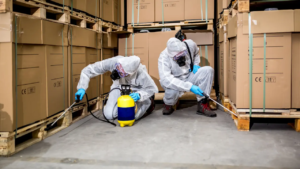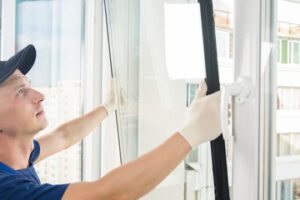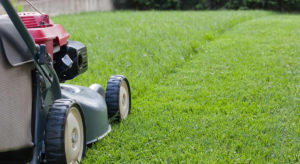Air conditioning provides people with a comfortable environment to relax in. It also helps people sleep better and work more productively.

But air conditioning is expensive to run and puts stress on electricity grids. And many lower-income families lack access to air conditioning technology. Air conditioners also circulate and filter air, which can help those with allergies and asthma. Get in touch with Ausco Air Heating & Air Conditioning for professional support.
Refrigerant is the heart of a cooling system. Also known as Freon, it’s responsible for absorbing and releasing heat during the air conditioning process. It circulates in closed loops in your air conditioner to maintain a cool temperature in your home or workplace.
The key feature of refrigerant is its ability to easily switch between liquid and gaseous states. This allows it to absorb and release heat effectively. In your air conditioning system, it starts at the evaporator coil in liquid form and absorbs heat from your indoor air. Then it heads to the compressor where it increases its temperature and pressure. The high temperatures cause it to shift to a gaseous state. This is where it meets the outdoor condenser coil. The condenser coil removes the heat from the refrigerant, causing it to change back into a liquid.
This liquid refrigerant then travels to the expansion valve. The expansion valve drops its temperature and pressure, changing it to a low-pressure liquid again. It then moves toward the evaporator coil to start the cycle over again.
When your air conditioning system leaks refrigerant, it can’t complete the necessary steps to cool your home. The most common sign of this issue is cold air coming out of the vents instead of warm or cool air. The leaking refrigerant is usually caused by loose or faulty fittings or a faulty valve in the evaporator coil.
Leaking refrigerant is not only an annoying problem to deal with, but it can lead to serious damage to your equipment. Reputable technicians will make sure your refrigerant is at the right level to avoid costly repairs and prevent a system breakdown. The modern refrigerants used in most AC systems are hydrofluorocarbons (HFCs) that don’t have the environmental concerns of older blends like R-22. R-22 was commonly used in AC systems prior to 2010, but it was banned for new AC systems in the United States because of its damaging effects on the environment.
Thermostat
Thermostats are one of the most essential components in your air conditioning system. They control the work of your air conditioner by ensuring that it’s turned on and set to a desired temperature when you want it to be. A faulty thermostat can lead to inconsistent indoor temperatures and expensive energy bills.
In most homes, thermostats are mounted on interior walls in highly-trafficked areas. They should be away from direct sunlight and not behind curtains to ensure they can read the room’s temperature accurately. They should also be at least five feet from the floor to allow for adequate air flow.
While there are many different kinds of thermostats, they all operate similarly. They measure the indoor temperature and communicate this information to the heating, ventilation, and air (HVAC) system. Once a desired temperature is reached, the thermostat signals the HVAC system to shut off.
Thermostats that require manual manipulation can be upgraded to programmable models for increased efficiency and flexibility. These devices allow you to schedule your preferred temperature changes for different times of the day and year, saving energy and lowering utility costs.
A common issue with older thermostats is their mercury switches, which can be damaged by improper handling or misalignment. This is a problem that often develops over time, so it’s important to regularly dust the unit and check for any signs of tilting.
Newer thermostats use a much more efficient form of temperature measurement, which consists of two thermometers inside the cover. The one in the middle displays the current temperature, while the other contains coiled bimetallic strips that expand and retract according to their temperature. The thermostat’s circuit board connects these strips to a blue wire that contacts the RC terminal on the bottom layer of the circuit board. When the thermostat’s mode switch is positioned to “on,” 24 volt power from the air conditioner transformer makes contact with the terminal, turning on one or both of the relays in the thermostat.
Evaporator Coil
The evaporator coil is the lifeline of your air conditioning system. It consists of a network of copper tubes that carry exceedingly cold refrigerant. When the blower in your HVAC system pulls warm indoor air across the coil, it absorbs that heat, cooling down the resulting vapor. It then releases that cooled air into your home or business. A dirty evaporator coil, however, can have some significant consequences, including higher electricity bills and less efficient cooling. This is why you should have a professional inspect and clean the coil on a regular basis.
In addition to accumulating dust and dirt, evaporator coils can also harbor mildew and bacteria that degrade the air quality in your building. Additionally, they are susceptible to corrosion from the chemicals within refrigerant. These issues all impact the evaporator coil’s ability to perform its function, which is to absorb heat.
Frozen evaporator coils can also restrict air flow and cause your AC unit to work harder than normal in order to cool your home or business. This increased workload can lead to higher electricity bills and can put unnecessary strain on your air conditioner, leading to possible breakdowns.
The evaporator coil is the most critical component in your air conditioning system, and it’s important to keep it well-maintained. In fact, having your evaporator coil professionally inspected and cleaned on a routine basis is the best way to ensure that it can continue to perform its vital function. This is especially true for older systems, which may be more susceptible to clogged coils. A professional can identify potential issues and recommend an appropriate course of action. Aside from hissing noises that often indicate a refrigerant leak, your air conditioning technician will look for signs of frost or ice on the coil’s surface and check for a proper level of refrigerant.
Condenser Coil
Located in the outdoor unit, your AC condenser coil serves two major functions to provide you with that cool air you crave all summer long. Though it is less well-known than the evaporator coil, the role of the condenser coil is equally significant to your cooling system.
Similar in design and construction to the evaporator coil, the condenser coil takes heat from the air in your home and discharges it outdoors. This process repeats until the temperature set by your thermostat is reached. The process is guided by the thermostat which communicates with the air conditioning system to ensure that the desired temperature threshold is met.
Your air conditioner is a complex machine which relies on the interaction of many components to keep your house comfortable. Gaining an understanding of the intricacies of the system and proper maintenance practices can help you maintain optimum efficiency and comfort for years to come.
Dirty coils are a major problem for your cooling system which can lead to higher electric bills, decreased comfort, and even the possibility of damage. This is because dirty coils can’t properly dump the heat into the outside air which forces that heat to travel back into your home.
The good news is that you can prevent this from happening by ensuring that your condenser coil remains free of debris and dirt. This can be done by removing any foliage or objects which could interfere with the airflow of the condenser coil and by cleaning your air conditioner on a regular basis. To clean your air conditioner’s condenser coil, spray it with a cleaner specifically designed for the job and follow the manufacturer’s instructions regarding contact time and rinsing.
Ductwork
The system of metal or synthetic tubes used to transport conditioned air from the HVAC equipment into living spaces is called ductwork. It’s important for your home’s indoor air quality and energy efficiency. Poorly designed or maintained ducts can result in high energy costs, hot and cold spots throughout the house, and air that smells musty or stale.
Ducts are typically constructed of sheet metal (galvanized steel or aluminum) or fiberglass. They’re insulated to control the temperature of the forced air, and they must be properly sealed to prevent leaks. They may be round, rectangular or tubular, and they’re available in a wide variety of sizes, colors and finishes.
A duct’s internal cross-sectional area determines its capacity to carry air, so it’s important that the right size duct is installed in your home. Oversized ducts reduce air flow, and undersized ducts reduce your system’s performance. Other factors that can affect ductwork design include the type of insulation, the number and location of elbows and transitions, and the material from which it is constructed.
Fiberglass ducts are usually fabricated from sheets of fiberglass strands held together with resin and covered in foil. The resulting material provides built-in insulation and offers superior thermal performance, and it’s also effective in reducing noise transmission. Galvanized steel ducts are manufactured from sheet metal that’s formed on-site or prefabricated, and they have the advantage of durability and strength. They can be insulated with either fiberglass or foam, and they’re coated with zinc for long-term protection against corrosion. Aluminum ducts are similar to galvanized steel ducts but are lighter and offer comparable strength and durability.








